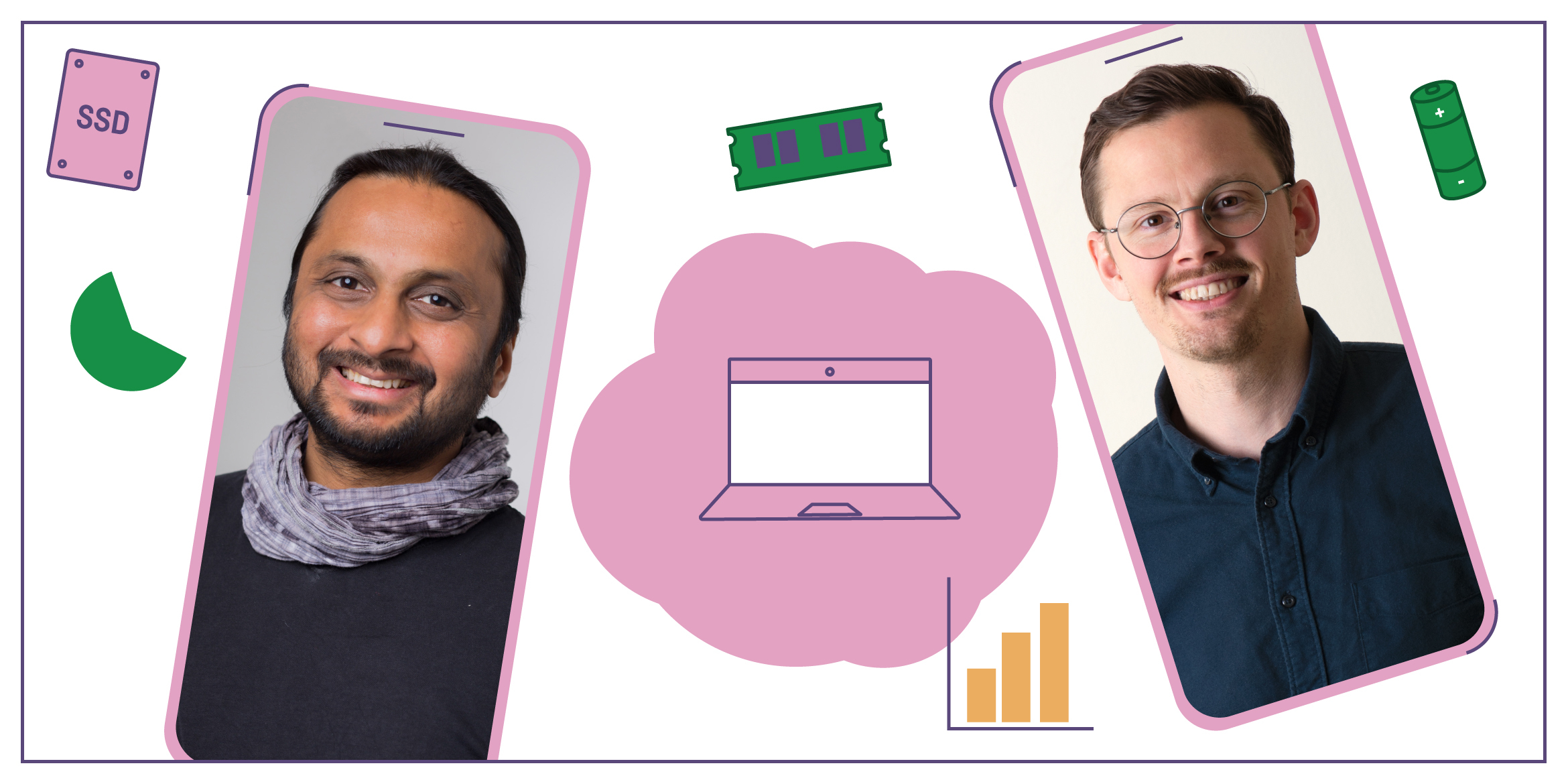Our Viktor Wennström spoke to Siddharth Prakash, Oeko-Institut, about the role ecolabels and sustainable purchasing can play in the development of more sustainable IT products.
Siddharth Prakash is a senior researcher at the Oeko-Institut in Germany, specializing in policies and instruments for sustainable consumption and production. He has published several reports on IT and sustainable consumption, and has provided his expertise in the development of criteria for many Type-1 ecolabels worldwide, such as the German Blue Angel, the EU Ecolabel, and Thailand’s Green Label. He also works in green public procurement policy and implementation, especially in Southeast Asia.
Viktor Wennström is currently busy developing criteria for the next generation of TCO Certified that will be launched in 2021. He is also responsible for the quality assurance of the certification’s verification systems, and makes sure that test methods and assessments are accurate and comparable. Here he talks with Siddharth Prakash about the future of sustainable IT products.
Viktor: Siddharth, you’ve been involved in sustainability and IT for more than 20 years. How come you made this the focus of your career?
Siddharth: I think the Earth Summit in Rio 1992 was a turning point for me. I was 14 years old at the time and was taken aback by the magnitude of environmental damage taking place. A few years later, I made a decision to study environmental protection at university. Since then, I’ve worked for 12 years at the Oeko-Institut, giving advice to political decision-makers, companies and consumer and environmental organizations worldwide. It was during my work within the framework of the EU ecodesign directive that I gained deep insights into the environmental impacts of IT products.
Viktor: What would you say are the most pressing sustainability issues when it comes to IT products right now?
Siddharth: It’s the extremely short usage time of our IT products. The majority of the environmental impacts of IT products, including greenhouse gas emissions, are emitted in the production phase. When you analyze the life cycle of an IT product, you can see that a majority of the greenhouse gas emissions are so called ‘scope 3 emissions’ which means that they are emitted in the supply chain. As IT products become more energy efficient, also due to the regulatory framework of the EU ecodesign directive, manufacturing has a much higher impact than the use phase. Other aspects are resource consumption, hazardous materials and e-waste. These are major problems. I’ve worked a lot with the informal sector in Africa and Asia related to e-waste issues, and I’ve seen what kind of problems they face in terms of recycling and disposal of IT equipment. For example, when cables containing brominated flame retardants are burned to retrieve copper, extremely harmful dioxins and furans are emitted.
Viktor: What needs to happen for the IT industry to become more circular and sustainable?
Siddharth: We need to focus more on the design and production phase. In a circular economy, you want durable products that can be repaired and reused as much as possible. You need high quality components and a modular design where the battery and other parts can be taken out without destroying the product.
You also need to be conscious about material choices. For instance, by limiting the diversity of plastic types in a product, avoiding certain coatings on plastics and avoid including toxic substances in materials, recycling rates can improve.
Viktor: What strikes me is that the knowledge is there, and in many cases also the methods for making improvements. How can we accelerate change?
Siddharth: I think one important key is market demand. With the size of their investment volumes, the purchasing power of public procurers is considerable. I think that the leverage they have lies in asking manufacturers and service providers to offer products that are repairable, reusable and with a minimum quality, and a minimum service life.
Viktor: What is your view on ecolabels and sustainability certifications and what role they can play in the development of sustainability?
Siddharth: If you combine ecolabels with public procurement, you can really push the industry in the right direction. EU procurement directives (2004/18/EC and Directive 2004/17/EC) allow using ecolabels as a source of environmental criteria for specifications, as a form of verification, and in the award phase. So, in technical specifications, you can, for instance, ask that all notebooks meet the sustainability criteria in TCO Certified for notebooks, or specify that products carrying TCO Certified for notebooks will be deemed to comply with the requirements. Of course, any other appropriate and reliable means of proof will also have to be accepted.
Ecolabels have a key role to play by showing that it is possible to achieve certain standards and provide indicators to policymakers on how to target those values over a longer period of time, for example, the development of mandatory minimum standards. Ecolabel criteria are not developed out of the blue — they are based on the life cycle approach and analysis of technology and the market. This means that they show the potential of the best available technologies in the market. The market share these products have might not be very high, but still, ecolabels have this approach to push the market towards more ambitious targets.
Again though, ecolabels would not be able to achieve substantial transformation as standalone instruments, but when they are used by public procurers, they can have a significant impact.
Viktor: Finally, in a circular world, how long do you think it’s reasonable that a notebook lasts?
Siddharth: A minimum first use of six years is absolutely possible from the perspective of the current state of technology. After that, they should be professionally refurbished and channeled for second-hand use. When purchasing new equipment, you should always estimate whether the equipment will still meet your performance requirements in the coming years. Otherwise, you will end up replacing the product before it reaches its technical life-span. To ensure a longer use, you can also demand a minimum guarantee time from your provider, for instance of three years. The warranty should cover repairs and replacement, but also on-site reconditioning within one to two working days, and batteries. If you also include strict requirements on the quality and durability of mobile devices, including batteries, this helps ensure that purchased products are of high quality.




